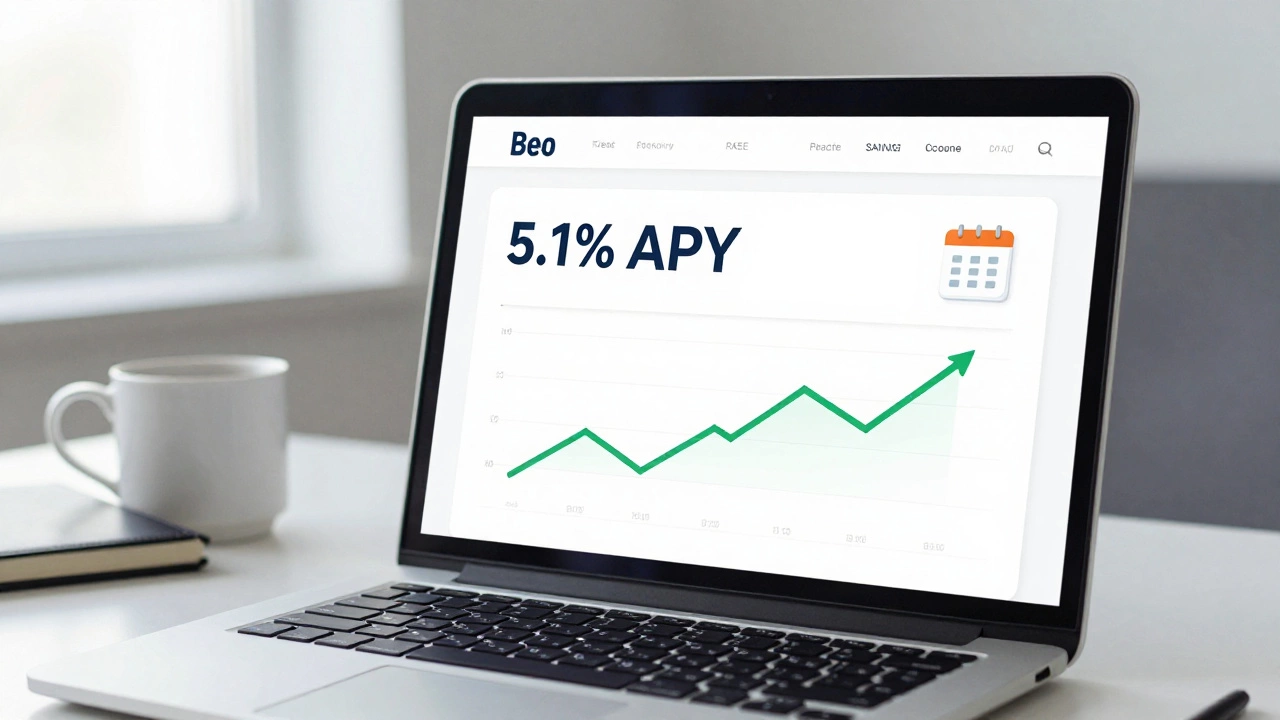Ever hear someone brag about having a fat stack of money just sitting in one savings account? Sounds pretty sweet, until you realize there’s a point where “too much” is actually a thing. Leaving a huge pile of cash in a single account can backfire for reasons most people don’t even think about. Between insurance caps, sneaky inflation, and missed opportunities, you might be doing your financial future a disservice by parking everything in one spot.
What’s the Real Limit for Savings Accounts?
The first thing that pops into most people’s minds: “Is there a number where the bank says 'no more'?” Technically, most banks won’t kick you out for holding a massive balance, but there’s a catch—the Federal Deposit Insurance Corporation (FDIC) only insures deposits up to $250,000 per depositor, per bank, per account category. It’s wild how many folks never check this fine print. If your bank goes belly-up and you’ve got $400,000 stashed in a single savings account, only $250,000 is federally protected. The other $150,000? Good luck getting that back if the worst happens.
This $250,000 limit isn’t just an American quirk. Countries like the UK and Australia have their own limits—usually with a local twist. In the UK, the Financial Services Compensation Scheme covers up to £85,000, and Australia’s Financial Claims Scheme covers up to AUD $250,000. Banks might feel rock-solid, but the 2008 financial crisis and a few smaller bank failures since then show nothing’s bulletproof. So, putting all your eggs in one basket isn’t just a cliché—it’s a warning.
Also, the FDIC coverage doesn’t double if you have a checking account and a savings account at the same bank—they both count towards the same $250,000 cap. If you’ve got joint accounts, the limit is higher: $250,000 per co-owner. That means a joint account with your spouse is insured up to $500,000. But if you’re single and stashing big money, you need to pay close attention.
Why Would Keeping Too Much Be a Problem?
“Who cares—I’ve never even seen $100,000!” That might be true for most people, but not everyone treats their savings this way. Inheritance, selling a house, cashing out stocks—that’s how money piles up. But even if you hit the insurance cap, there’s another sneaky problem: inflation.
Inflation might sound boring, but it quietly erodes the actual value of your money. Over the last decade, inflation in the U.S. has averaged around 2-3% per year, but it’s jumped higher since the pandemic. Imagine you kept $250,000 in a savings account earning 0.1% interest (which, let’s be honest, is what most big-name banks offer). After a year, you’d get $250 for your trouble—but if prices rise 3% a year, you technically lost $7,250 in buying power. The more you stockpile, the faster you lose without noticing.
Then there’s the missed opportunity factor. Banks make more lending out your cash than they pay you in interest. Unless you’re getting a promotional savings rate or you’re in a high-yield account (which can still lag behind inflation), your money could work far harder somewhere else. Having some cushion is smart, but letting your entire net worth sleep in a savings account is a bit like locking your best player on the bench for the whole season.
How Much Should I Actually Keep in Savings?
Let’s get practical. Most financial advisors shout “emergency fund!” from the rooftops—and with good reason. Life is unpredictable, so saving 3-6 months of living expenses in a readily accessible account makes sense. For some, that’s $10,000—others, it could mean $50,000 or more, especially if you have a mortgage, kids, or irregular income.
Once you’ve calculated your real emergency cushion, ask yourself a blunt question: “Am I parking extra money here out of habit or fear?” Banks know inertia is powerful. Even if your account balance swells way above your rainy day needs, you get nothing in return except a false sense of security. Don’t just take my word for it—one study from the Federal Reserve found that people often keep way more in checking and savings than they actively need, just because it feels safe.
If you do come into a larger chunk of cash (a windfall, house sale, bonus, whatever), there’s no harm in letting it sit for a month or two while you figure out your plan. Just don’t let “a month or two” turn into years. How fast should you move it? As soon as you have a strategy that fits your goals and risk tolerance.

Smart Moves: What to Do If You Have “Too Much”
First step: check your insurance. If you’re over the $250,000 FDIC limit at any one bank (including all your checking, savings, and CDs there combined), split it up. Opening accounts at different financial institutions multiplies your coverage—for example, two banks at the cap gives you $500,000 protection. If you’re married, joint accounts add another layer of security.
Beyond chasing insurance, look for better returns. High-yield savings accounts, online banks, and credit unions often pay higher interest than big banks. Just make sure the account is also FDIC- or NCUA-insured. Then, think bigger: money market accounts, short-term CDs, or even U.S. Treasury securities can offer a little more punch with similar or even better safety.
Got savings well above what you’ll ever need for emergencies? That’s where investing steps in. Low-cost index funds, retirement accounts, or even real estate could all grow your money faster than any savings account ever will. You can still keep enough liquidity to pounce on opportunities or weather disasters, but your money won’t be stuck in low-growth limbo.
- Review all your account balances every few months. Bank mergers sometimes combine your accounts without warning, instantly bumping you over the insurance cap.
- Don’t forget about beneficiaries or Payable on Death designations—these can sometimes boost your insured amount, but ask your banker to explain the details, since the rules get tricky fast.
- If you run a business, keep your business savings separate. FDIC insurance covers business and personal accounts separately, so don’t mix the two.
One more practical tip: If a bank offers a sky-high rate that sounds “too good to be true,” check the fine print. Sometimes, these rates drop after a few months, or you’re required to jump through hoops to keep your boost—automatic transfers, minimum balances, and so on.
Red Flags and Hidden Dangers: Risks You Might Not See
Let’s talk about stuff most people don’t mention. Digital fraud and bank glitches happen more than you think. Having all your funds in one digital account—especially with a single login or password—is risky. If your account gets hacked or frozen due to ID theft, you’ll be locked out of all your cash. Diversification isn’t just about investments; it applies to accounts, too.
An increasingly common trap: “Escheatment.” If your account sits untouched for years, banks can declare it dormant and send your funds to the state. Retrieving this money is a paperwork nightmare, so keep tabs on all your accounts and activity.
Some banks place withdrawal limits on savings accounts (such as the old Regulation D limit of six withdrawals per month, imposed by the Federal Reserve, although this was loosened in 2020). Still, certain banks kept these self-imposed caps. Exceed them too often, and your bank might even convert your savings into a checking account—often with worse interest and fewer protections.
Watch out for “gotcha” rules. If you have a premium savings account because of your fat balance, check what happens if you drop below a threshold. Banks sometimes ding you with service fees or suddenly slash your already-meager interest rate.
And here’s a sneaky trick: Banks may use high balances as an opportunity to upsell you irrelevant products—overdraft protection, investment advice, or bundled fees. Don’t let them steer you somewhere you don’t need, just because they notice you’ve got cash on hand.
Building a Simple, Safe, and Smarter Savings Strategy
By now, it’s clear there is such a thing as too much money in a single savings account. Always check the FDIC (or your country’s equivalent) insurance cap—if your total liquid savings are below the $250,000 mark, you’re probably fine, especially if this is only your emergency fund. But if you’re over that threshold, or you feel like your money is trapped and lazy, you owe it to yourself to branch out.
Split your funds across several reputable banks if you have more than the covered limit. Make sure every dollar is insured. Next up, maximize your return—online savings and money market accounts are easy wins. Once your emergency funds are set, invest for your future. Stocks, bonds, and retirement accounts can all put your cash to work, but don’t take risks with money you might need on short notice.
Keep an eye out for account changes, withdrawals, and bank policies. Schedule regular money checkups, just like you would with a car or your health. And always keep your passwords and personal info locked down.
- Save enough for real emergencies—ideally 3-6 months’ expenses in a savings account.
- Don’t cross insurance caps without a backup plan.
- Shop around—better rates are always popping up at new banks.
- Invest the rest for long-term growth.
- Stay vigilant against fraud, fees, and account changes.
Money in the bank shouldn’t stress you out. Play it smart, spread out your risk, and let your savings actually work for you. That’s how you turn cash into confidence.

